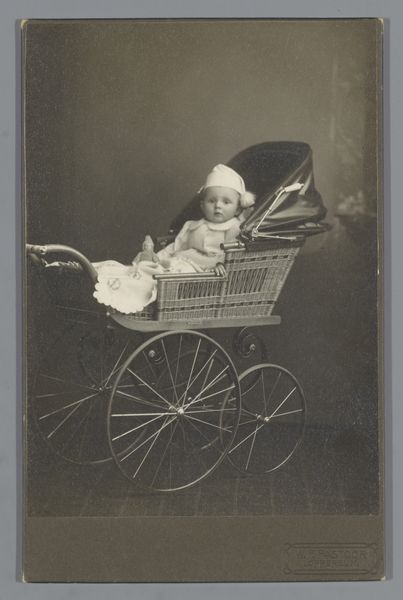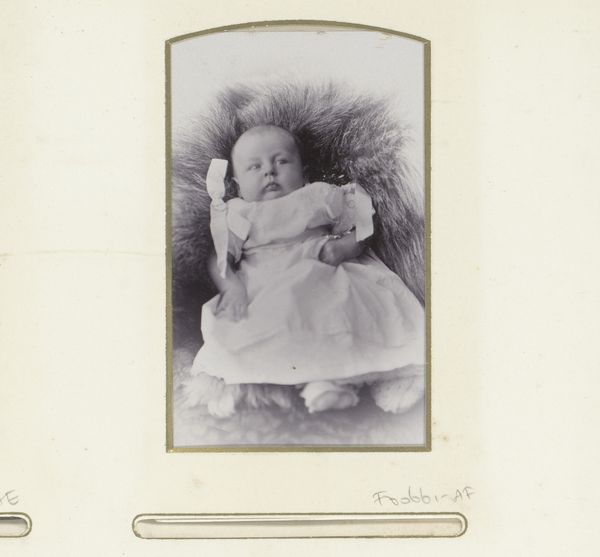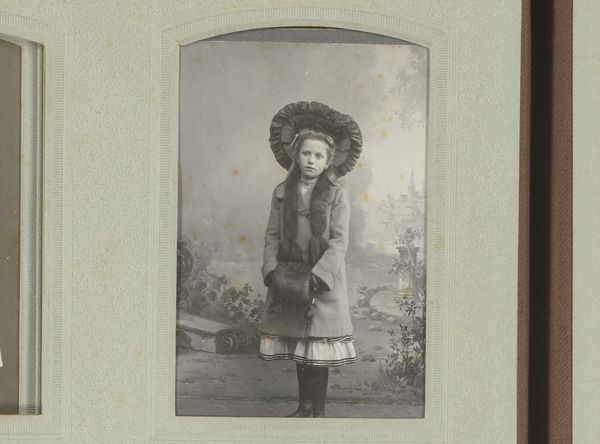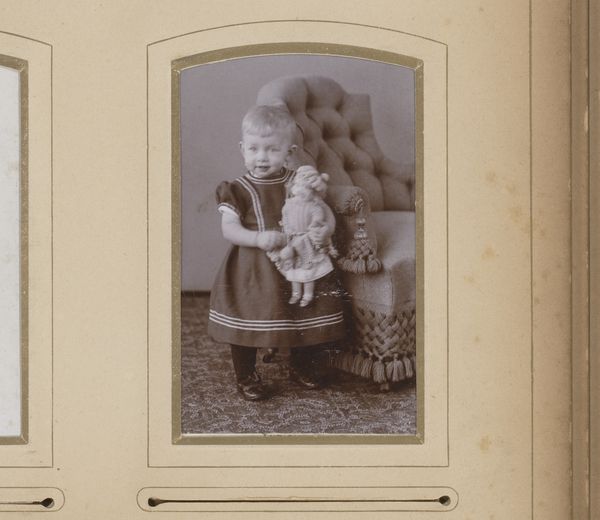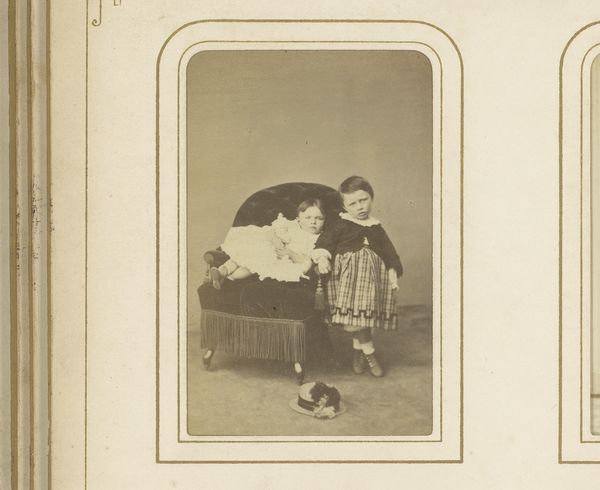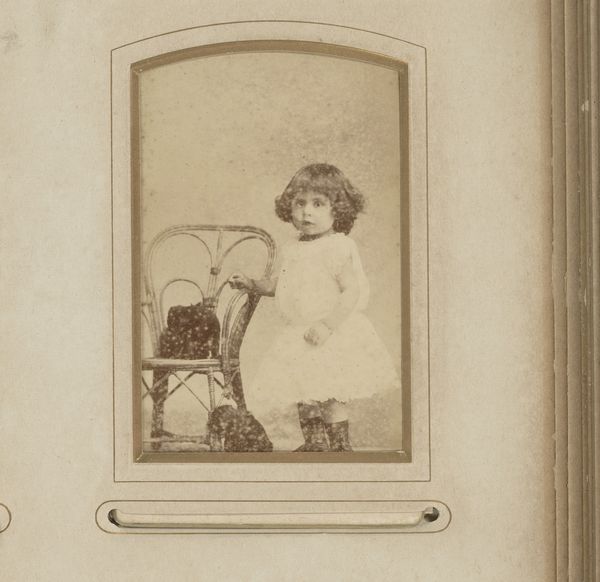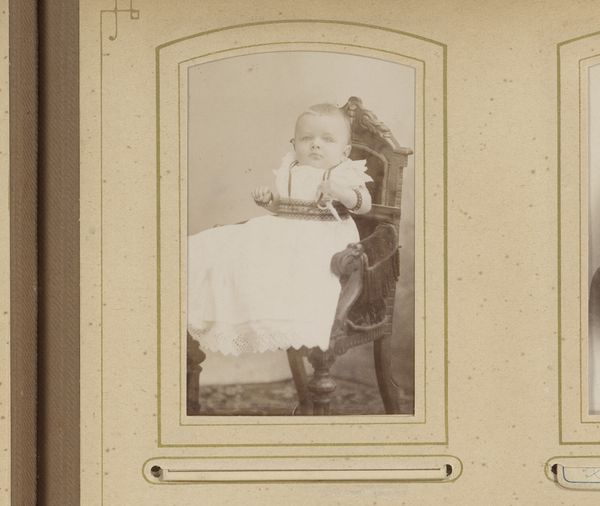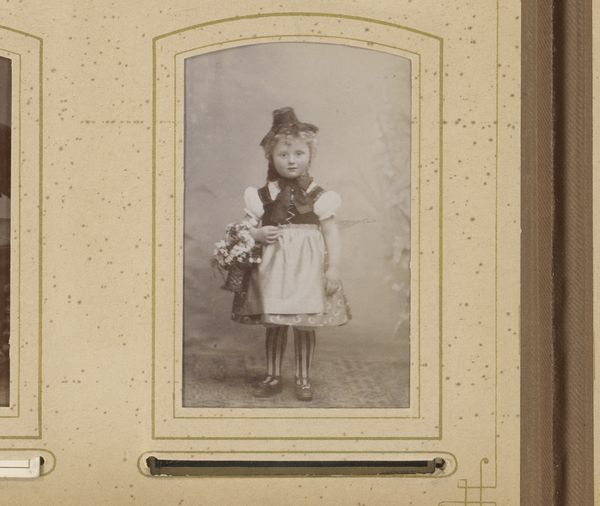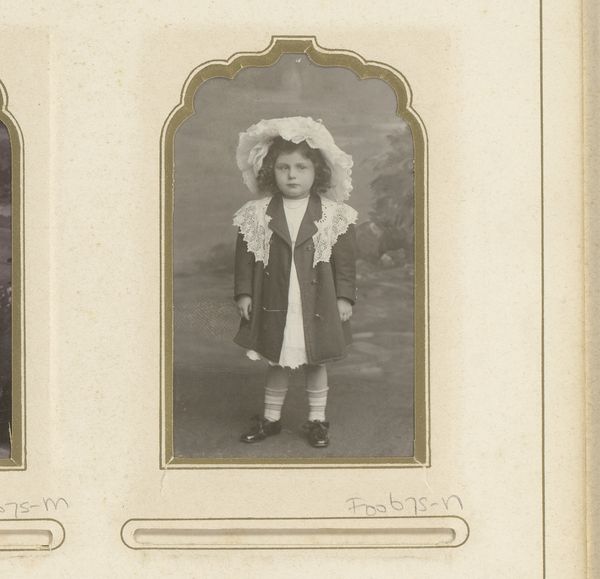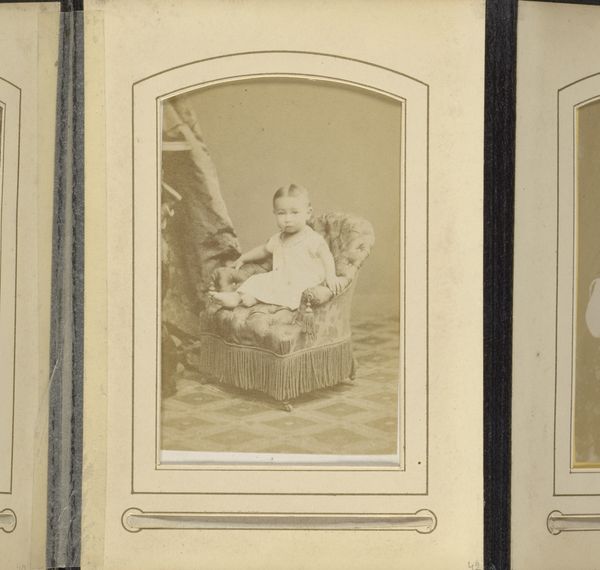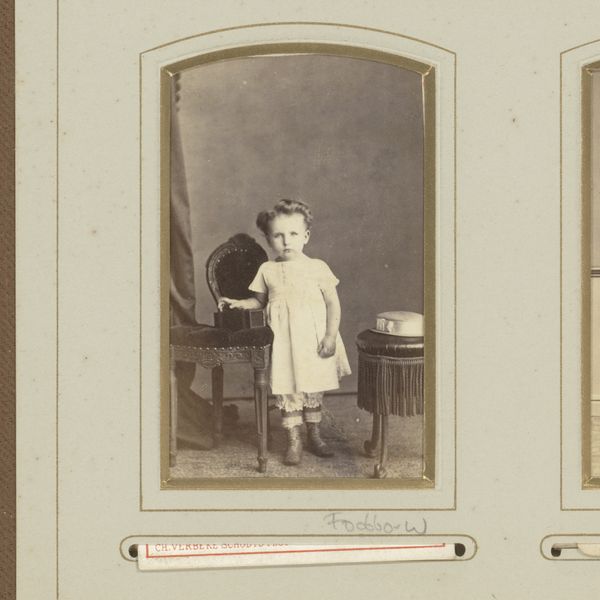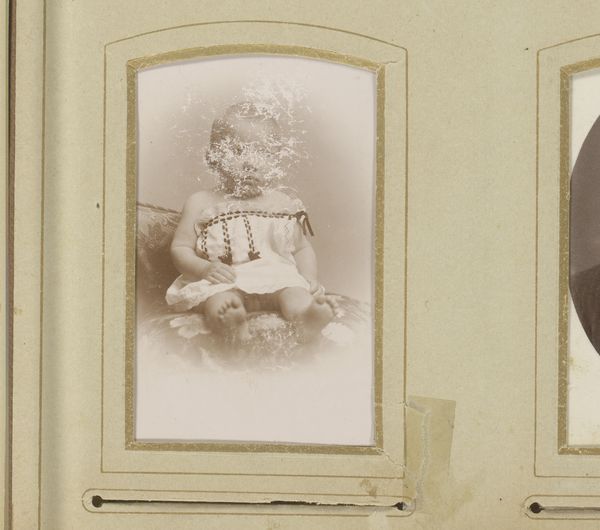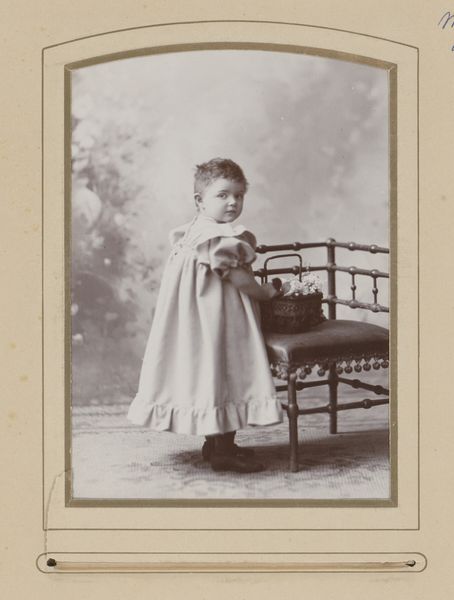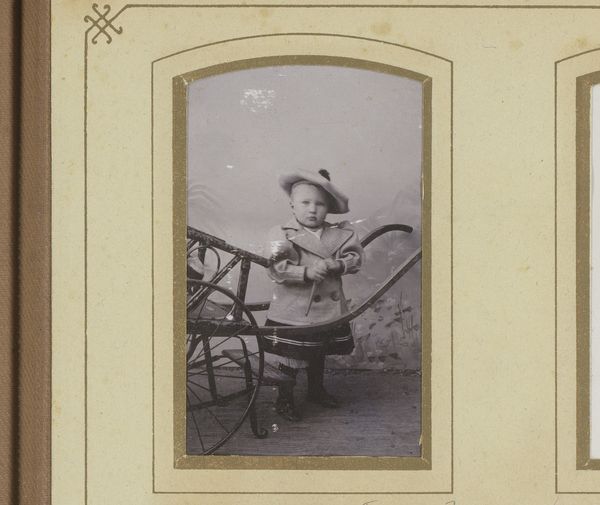
photography
#
portrait
#
still-life-photography
#
pictorialism
#
archive photography
#
photography
#
genre-painting
Dimensions: height 105 mm, width 162 mm
Copyright: Rijks Museum: Open Domain
Curator: Welcome, let’s explore this evocative photograph, "Portret van een onbekend meisje met een poppenwagen" taken by Theodor Liebert between 1900 and 1915. Editor: There's such a constructed formality to it, almost like a miniature stage setting. It feels deliberately arranged and yet there's a wistfulness to the girl's gaze. Curator: Yes, the staging contributes greatly to that effect. It employs a painted backdrop depicting a romantic garden and castle, common in the Pictorialist style. These constructed realities provided a symbolic space for portraiture. Consider the doll in the carriage—a surrogate child—and how it speaks to societal expectations and gender roles. Editor: That’s interesting—the means of creating this fiction fascinate me. We’re presented with something that seems like an honest portrait but it’s carefully constructed with all these manufactured elements. It is a photograph, but relies so heavily on painting traditions. How would that combination affect a contemporary viewer’s perception of reality versus representation? Curator: It certainly blurs the line, doesn’t it? Early photography was so concerned with achieving the status of art. The doll itself also becomes symbolic - it signifies innocence but also the burden of future motherhood in that historical period. The entire scene acts as a carefully crafted narrative. Editor: I'm also curious about the material object of the photograph itself. The cardboard framing—does that act as a distancing mechanism, emphasizing its artifice and mass-produced nature even while presenting a unique image? I’m intrigued by how those elements would have influenced value and access to photography as an artistic medium. Curator: Precisely. Even the sepia tone contributes to this atmosphere of nostalgia and echoes earlier forms of photography, grounding it in its historical moment and collective visual memory. It represents and performs certain social positions available at the time. Editor: Thinking about the layers of artifice and labor involved—from the backdrop to the processing—reshapes how I see this. What began as a portrait becomes a complex commentary on material culture. Curator: A powerful blend of sentiment and manufactured identity indeed. Thanks for shedding light on that process, seeing the materiality. Editor: And thanks for helping me think about its place in that grand historical visual narrative.
Comments
No comments
Be the first to comment and join the conversation on the ultimate creative platform.
